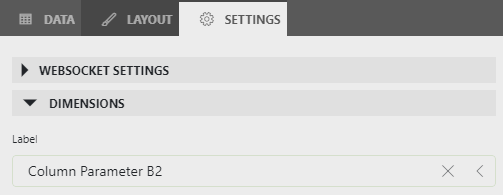We’d like to perform queries on a table from an element with a specific element name. This is because we’d like to install this dashboard at multiple DataMiner systems and we don’t know the element ID in advance.
Is the ‘Get parameter table by alias’ the correct one to use in this case?
According to the documentation this requires Elasticsearch is installed. Is this absolutely required for this use case?
Use case:
We have a device table in an element with a specific element name, which has a firmware column. We would like to display a pie chart showing the amount of devices with distinct firmware versions.
fw_001: 6
fw_002: 9
fw_003: 1
Hi Jeroen,
I believe it should be possible. I performed a small test using:
- DMA version: 10.1.3.0-9963
- Database: Cassandra only (no Elastic)
I used the following query:
Get elements
– Filter Name
+ Filter method ‘Name’ contains ‘MyElement’
– Select
+ Mandatory column (Element ID, Name)
Inner Join
– Get parameters for elements where
+ Type: Protocol
+ Protocol Version: Production
+ Parameter: The table
– Select
+ Element ID
+ Display Key Column
+ Column parameter containing the firmware
– Filter method contains ‘Display Key’contains ‘The display key’
on Element ID equals Element ID
Although the inner join is based on element IDs, the element ID is not hardcoded in the query.
- Table in Cube:

- Query result in dashboard:

I was able to feed a pie chart with the result of the query:

To select a specific column from the query, you will need to select the pie char component, go to settings and select the corresponding column in ‘Label’:

Even though you provide an answer for the use case, I believe it’s important to mention that the ‘Get parameter table by alias’ has nothing to do with the name of an element. Instead it’s reference to the alias used in an Elastic database.
“Get parameter table by alias” works only with Elastic ((logger-)tables stored in Elasticsearch can be combined into one alias, so this has nothing to do with your use case). Miguel’s answer might be a solution for your use case.